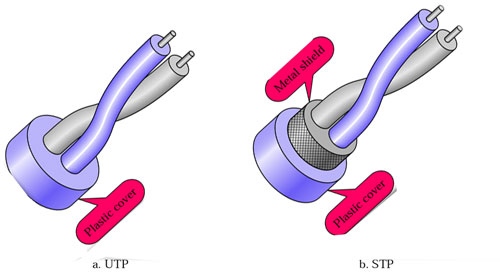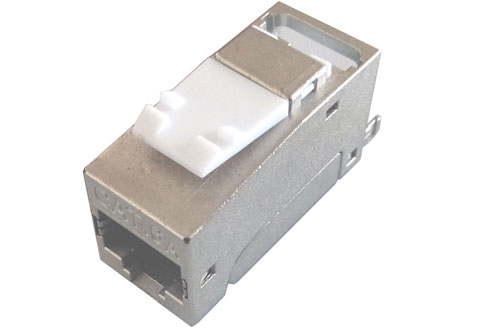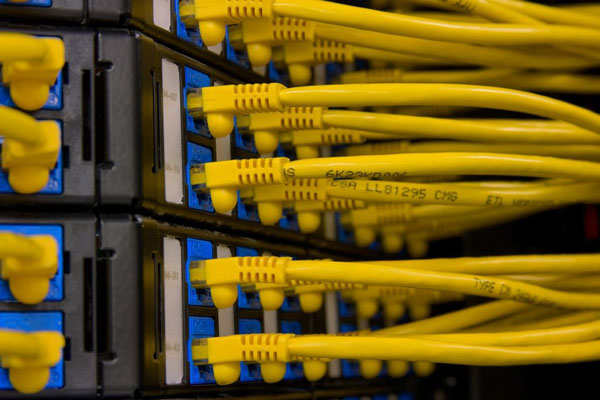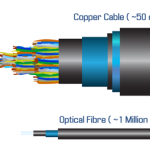Believe it or not, there is no straightforward answer to this question. Most countries in Europe have been using STP cabling for a long time, whereas in the US and in Canada, UTP has maintained dominance with over 95 percent of the installed base using UTP instead of STP. A best practice is to stay with the industry trend for the country where the cabling is to be installed.
UTP and STP cabling types are commonly applied for horizontal segments and for patch cables. Installing STP cables takes more time than installing UTP cables, primarily due to the stringent grounding requirements for shielded systems. Badly grounded or ungrounded STP cables or components can perform worse than UTP cabling. An ungrounded cable can act like a magnet for attracting noise on the wire. Screening and shielding technologies are commonly available; many active electronics today use shielding.
The following table compares UTP and STP cables.
| Advantages | Disadvantages | |
| UTP | Easier to implement | Requires more space due to a larger cable diameter |
| Better performance for PoE plus | External noise suppression | |
| Better suited for dynamic environments | Category 6a is not a ratified standard yet | |
| Slightly cheaper | ||
| STP (S/UTP, S/STP, STP) | Smaller diameter | Cost of labor is higher |
| Better internal and eternal noise suppression |
Low acceptance in North America | |
| Better suited for static or noisy (EMI/RFI) or secure environments |
Installation has to be precise, more time consuming | |
| Some exceed performance | Strict grounding requirements | |
| AXT minimized by shielding rather than by space | ||
| Better resistance to EMI and RFI |
For copper, future speeds beyond 10 Gbit/sec may call for Category 7 variations, which means inclusion of SIP. This type of cabling is expensive since it will involve new connectors. With the gradual drop in cost of fiber and its active components, it would not be surprising if fiber becomes a viable contender for Category 7. Selection of UTP or STR depends on your environment and on your personal preference. Cabling systems usually are built to support applications for the next 10 years; after this period of time the cabling is outlived by technology demands, which will force you to replace your cabling infrastructure.









